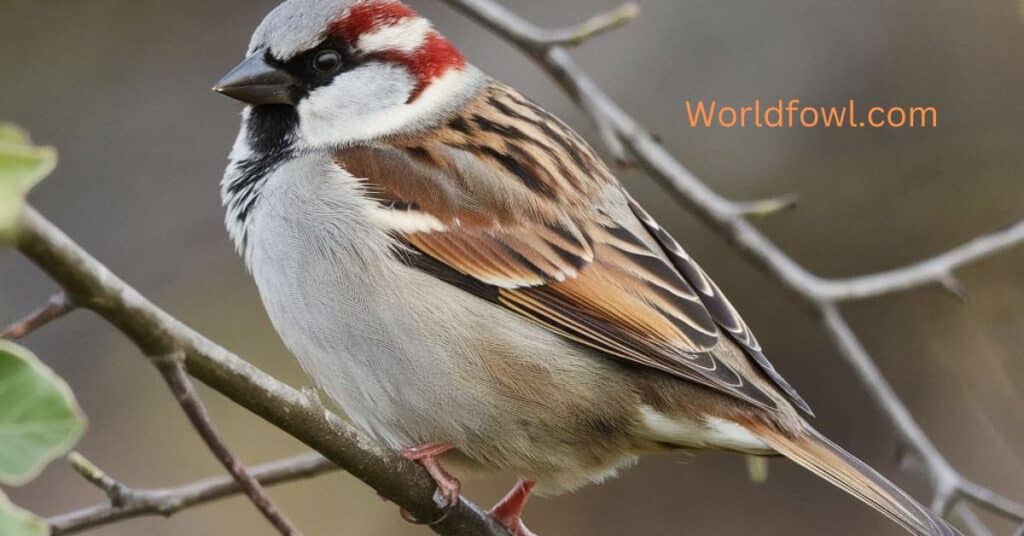Known scientifically as Passer domesticus, are small birds that have become a ubiquitous presence in urban and rural environments worldwide. Their adaptability enables them to thrive alongside humans, but their growing population raises an important question: Are house sparrows bad? This article will delve into various aspects concerning house sparrows, examining their ecological impact, effects on agriculture, health risks, and behavioral considerations, while addressing the complexities of their presence in our environments.
Understanding House Sparrows
Origins and Distribution
Native to Europe and Asia but have successfully spread across the globe, including North America, Australia, and New Zealand. Their extensive distribution can be attributed to their close association with human habitation.
- Adaptability: House sparrows thrive in diverse habitats, from urban centers to rural farmlands. Their ability to forage in human environments has significantly contributed to their success. They have learned to exploit human activities, such as agriculture and waste management, to secure food resources.
- Habitat Preference: They prefer nesting in buildings, trees, and shrubs, often taking advantage of human structures for shelter. This preference often leads to their proximity to human populations, where they can find abundant food sources. House sparrows often nest in eaves, vents, and attics, making them a common sight in residential areas.
Social Behavior
often seen in flocks. This social structure provides safety in numbers and improves foraging efficiency. However, their social behavior also has implications for other bird species.
- Flocking Behavior: House sparrows often gather in large groups, which can lead to competitive feeding. This competition can be detrimental to other bird species that share similar dietary preferences. The presence of large flocks can overwhelm smaller birds at food sources.
- Mating and Nesting: During the breeding season, with males defending nesting sites aggressively. This aggression can further impact local bird populations, leading to conflicts and displacement. Males will often chase off other males and even engage in physical confrontations to protect their territory.
you may like : Do Hawks Hunt At Night – The Truth Revealed
Ecological Impact of House Sparrows
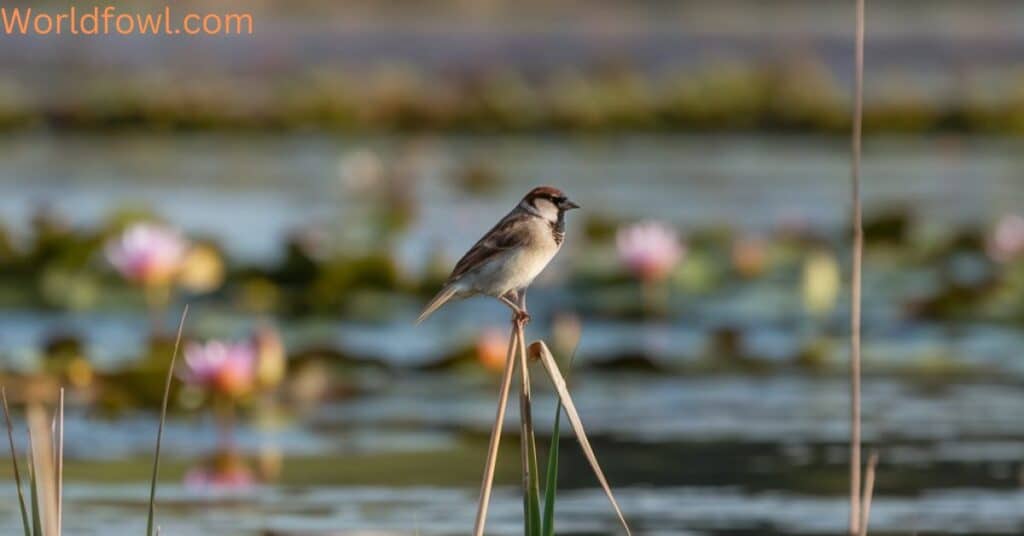
Competition with Native Species
One of the primary concerns regarding house sparrows is their competitive nature, particularly concerning native birds. This competition raises the question: Are house sparrows bad for native species?
- Nesting Competition: House sparrows often take over the nesting sites of native birds, especially cavity-nesters. This behavior can lead to declining populations of more vulnerable species, as they struggle to find suitable nesting locations. For example, species such as bluebirds and swallows may lose nesting opportunities.
- Resource Competition: feeding on seeds, grains, and insects. Their opportunistic feeding habits can deplete resources crucial for native birds, potentially leading to declines in those populations. This competition can be particularly severe during breeding seasons when food is essential for raising young.
Are House Sparrows Bad for Ecosystems?
The impact of house sparrows extends beyond just competition with native species. Their presence can disrupt entire ecosystems.
- Disruption of Food Webs: House sparrows can alter the dynamics of food webs by preying on insects that are essential for pollination and pest control. This predation can lead to imbalances in insect populations, affecting plant health and biodiversity. For instance, a decline in insect populations can have cascading effects on plant reproduction and the animals that depend on those plants.
- Impact on Plant Life: By consuming seeds from various plants, house sparrows can hinder the growth and reproduction of certain plant species. This feeding behavior can lead to reduced plant diversity and altered ecosystem dynamics. In agricultural settings, this can result in lower crop yields and diminished ecosystem services.
Are House Sparrows Bad for Biodiversity?
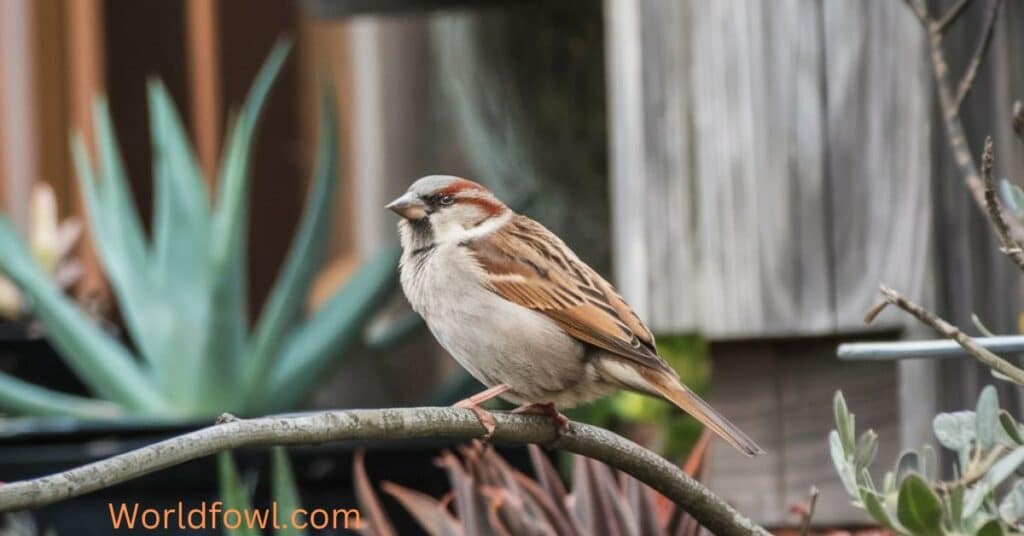
The question are house sparrows bad? is crucial in discussions about biodiversity. Their invasive nature and impact on native species can lead to significant ecological consequences.
- Loss of Native Bird Populations: Many studies have documented declines in native bird populations correlating with the increase of house sparrows. For example, species such as the purple martin and various songbirds have seen declines in their numbers in areas where house sparrows thrive.
- Genetic Diversity: The displacement of native species by house sparrows can lead to reduced genetic diversity, making populations more vulnerable to diseases and environmental changes. This lack of genetic diversity can hinder a species’ ability to adapt to changing climates or new pathogens.
you can also read : Do Hawks Attack Humans? Why Are Hawks Aggressive To People?
Agricultural Concerns
Damage to Crops
House sparrows are often regarded as agricultural pests. Their feeding habits can lead to significant crop damage, prompting many to consider: Are house sparrows bad for agriculture?
- Feeding on Grains: House sparrows are particularly attracted to grain crops such as wheat, corn, and barley. Their feeding can result in substantial economic losses for farmers, especially in areas where these crops are a primary source of income. In some cases, farmers have reported losses exceeding 20% of their grain harvest due to house sparrow activity.
- Impact on Gardens: Home gardens are not immune to house sparrow predation. They often raid vegetable patches and fruit trees, diminishing yields and affecting the quality of homegrown produce. Gardeners may find that their crops, especially soft fruits and vegetables, are targeted by house sparrows, leading to frustration and reduced harvests.
Economic Implications
The economic ramifications of house sparrows extend beyond crop damage. Consider the following:
- Increased Management Costs: Farmers and landowners may need to invest in various management strategies to deter house sparrows, adding to their operational costs. This includes purchasing bird deterrents, implementing physical barriers, and potentially hiring pest control services.
- Loss of Income: The damage caused by house sparrows can lead to reduced income for farmers, particularly those who rely heavily on grain and fruit production. This financial strain can be especially challenging for small-scale farmers who operate on tight margins.
you also like : Finches In Texas – The Complete Guide To Texas Finches
Health Risks Associated with House Sparrows
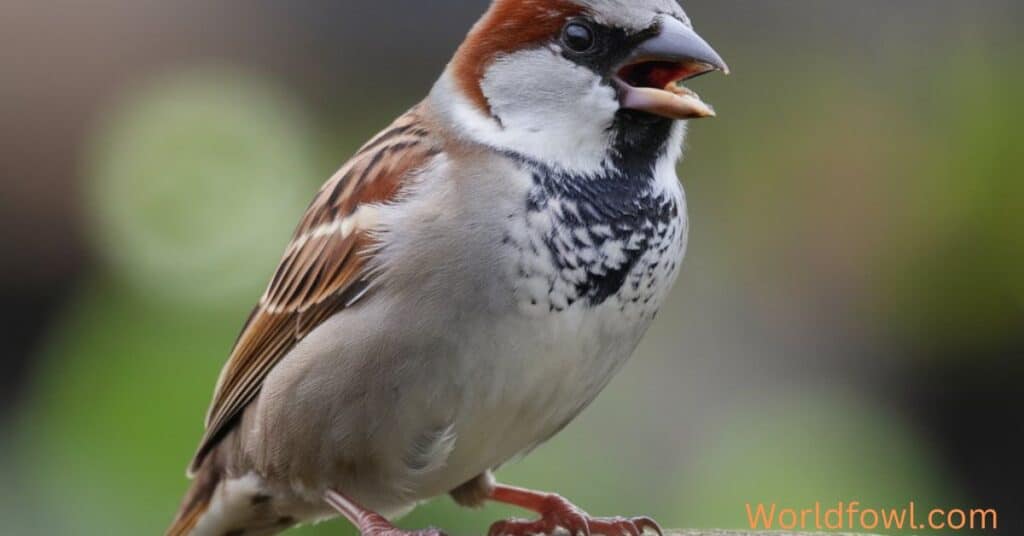
Disease Transmission
House sparrows can pose health risks to humans, particularly in urban areas where they congregate. Their potential to transmit diseases raises further questions about their impact: Are house sparrows bad for human health?
- Salmonella: House sparrows are known carriers of salmonella, which can be transmitted through contaminated surfaces or food. This presents a risk, especially in areas where birds congregate, such as parks and outdoor dining spaces. Outbreaks of salmonella linked to bird droppings can lead to public health concerns.
- West Nile Virus: While primarily associated with mosquitoes, house sparrows have been implicated in the transmission of West Nile Virus. Their presence may increase the risk of outbreaks, especially in urban settings where mosquitoes thrive.
Allergens and Contaminants
The dropping can lead to unsanitary conditions that may affect human health:
- Allergenic Reactions: Bird droppings can trigger allergic reactions in sensitive individuals, leading to respiratory issues. This is especially concerning in areas where house sparrows nest close to human habitation, such as in urban environments.
- Contaminants: The accumulation of droppings can attract pests and create foul odors, making it essential to manage their presence in populated areas. The potential for contamination of food sources adds another layer of concern, particularly in outdoor dining areas and public parks.
Behavioral Considerations
Are House Sparrows Aggressive?
Aggressive behavior, particularly during the breeding season. This aspect of their behavior contributes to the ongoing debate about their impact:
- Territorial Aggression: Male house sparrows can be highly territorial and may chase away other birds, including native species. This aggression can lead to increased stress among local bird populations. In areas where multiple species nest, house sparrows can dominate the available space, leading to reduced nesting success for other birds.
- Conflict with Humans: While house sparrows generally avoid confrontation with humans, they can become aggressive if they feel threatened. Instances of house sparrows defending their nests can result in aggressive displays toward people. This behavior can lead to negative interactions between humans and birds, further complicating their management.
Social Interactions
The social nature also plays a role in their interactions with other species:
- Flocking Dynamics: House sparrows often flock with other birds, which can lead to competitive feeding scenarios. Their presence in mixed flocks can sometimes displace more vulnerable species, exacerbating the challenges faced by native birds.
- Cooperative Breeding: In some environments, house sparrows may engage in cooperative breeding, where non-breeding individuals help care for the young. While this behavior can enhance survival rates for chicks, it can also lead to increased competition for resources among adult birds.
you may also like : Do Vultures Attack Humans? Here’s What You Need To Know
Invasive Species Status
Are House Sparrows Invasive?
To address the question , it’s crucial to consider their status as an invasive species.
- Definition of Invasive Species: An invasive species is defined as a non-native organism that causes harm to the environment, economy, or human health. House sparrows fit this definition well, particularly in regions where they were introduced.
- Evidence of Invasiveness: Numerous studies have documented the negative impacts of native bird populations and ecosystems, highlighting their invasive nature. Their ability to thrive in urban environments often comes at the expense of local biodiversity.
Implications of Invasiveness
Being classified as an invasive species are significant:
- Effects on Biodiversity: Their presence can lead to declines in native bird populations and disrupt local ecosystems, raising concerns among conservationists and wildlife managers alike. The displacement of native species can result in long-term changes to ecosystem structure and function.
- Economic Costs: The agricultural industry faces economic losses due to crop damage and the increased costs of management, further underscoring the need to address the house sparrow issue. Farmers may need to invest in protective measures, leading to increased operational costs.
Breeding Phenomenon
House Sparrow Reproduction
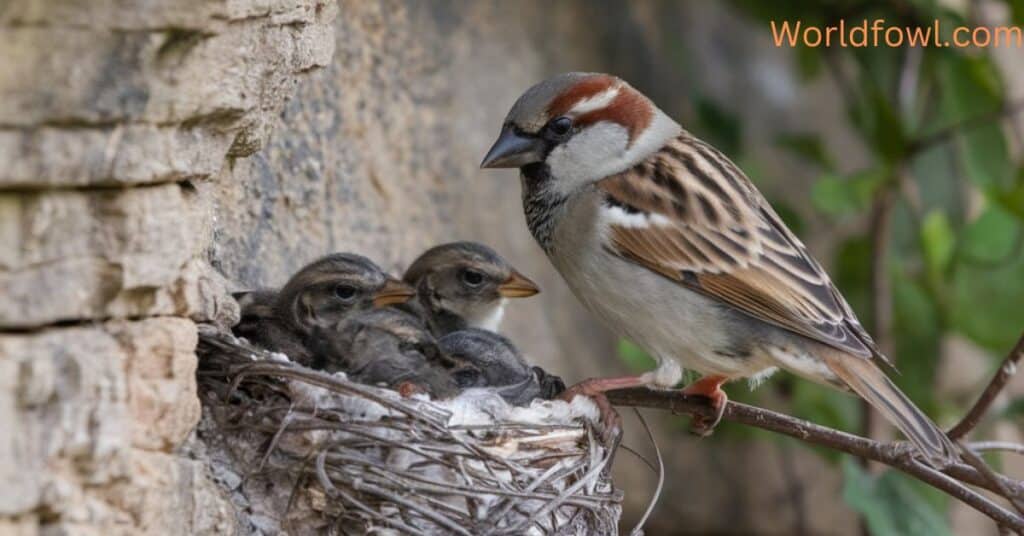
One reason have become so successful is their remarkable breeding abilities.
- Rapid Reproduction: can produce multiple broods each year, with each brood containing four to five eggs. This high reproductive rate enables their populations to grow rapidly. In optimal conditions, a single pair of house sparrows can produce a large number of offspring in a short period.
- Year-Round Breeding: In warmer climates, house sparrows can breed year-round, leading to even more significant population increases. This continuous reproduction cycle contributes to their invasive status, making it difficult for native species to compete.
Impact of Rapid Population Growth
The rapid growth of house sparrow populations can exacerbate the challenges they pose:
- Increased Competition: As their numbers grow, they compete more aggressively with native birds for resources, further threatening those populations. The cumulative effect of house sparrow competition can lead to long-term declines in native bird diversity.
- Economic Strain on Agriculture: Farmers may find themselves facing increasing losses as house sparrow populations rise, creating a cycle of economic strain that is difficult to break. The impact can create a sense of frustration among farmers who may feel powerless to control their populations.
Legal Protections and Ethical Considerations
Are House Sparrows Protected?
Understanding the legal status of house sparrows is essential for effective management. In many regions, house sparrows are not protected under wildlife conservation laws.
- Migratory Bird Treaty Act: In the United States, the Migratory Bird Treaty Act does not protect, allowing for various management strategies. This lack of protection gives landowners more latitude in addressing house sparrow issues, but it also raises ethical questions about management practices.
Ethical Considerations in Management
While managing, ethical considerations must guide actions:
- Humane Treatment: Many people advocate for humane methods of control, focusing on deterrents rather than lethal measures. This aligns with broader conservation principles that prioritize the welfare of all species and promote coexistence.
- Public Perception: The public’s attitude toward wildlife management can influence decisions. Non-lethal methods are often preferred, and community engagement in management strategies can foster positive relationships between humans and wildlife.
Effective Solutions for Managing House Sparrows
How to Get Rid of House Sparrows
If you’re facing issues with house sparrows, several strategies can help manage their presence effectively.
Humane Removal Methods
- Live Traps: Setting up live traps can help capture house sparrows for relocation. It’s crucial to follow local regulations regarding wildlife removal and relocation to ensure compliance with laws and ethical standards. Live trapping can provide a humane solution to managing house sparrow populations.
- Professional Services: Hiring wildlife control professionals who specialize in humane removal can ensure that house sparrows are handled appropriately and that humane practices are followed. Professionals can assess the situation and implement effective strategies tailored to specific environments.
Use of Decoys and Traps
Installing decoys of predatory birds can deter house sparrows from nesting in your area.
- Predator Decoys: Placing decoys of hawks or owls can create an illusion of danger, discouraging house sparrows from settling in the area. This method takes advantage of the natural fear that smaller birds have of their predators.
- Baited Traps: Using baited traps effectively captures house sparrows. Proper placement and bait selection are crucial for success; using seeds that house sparrows prefer can significantly increase capture rates.
you also like : Parrots in Florida – The Complete Guide To Wild Parakeets In Florida
How to Deter House Sparrows
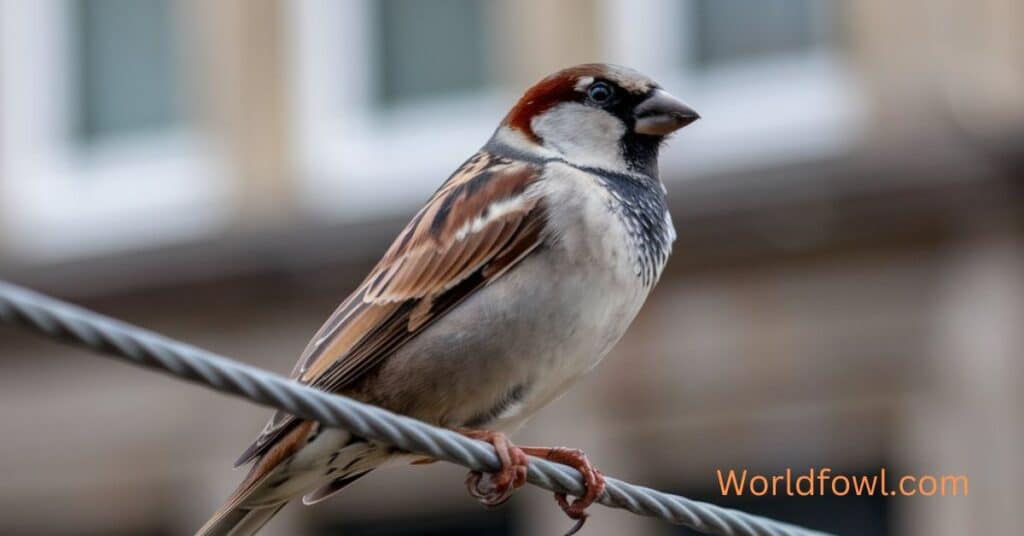
Prevention is often the best approach when dealing . Several strategies can help:
Environmental Modifications
Making your property less attractive to help deter them. This includes:
- Removing Food Sources: Ensuring that bird feeders are not accessible to help reduce their numbers. Consider using bird feeders designed to exclude larger birds, or place feeders in locations that are hard for sparrows to reach.
- Securing Garbage: Keeping garbage bins securely closed can prevent from scavenging for food. Proper waste management is crucial in reducing the availability of food sources for these birds. This can involve using bird-proof trash cans and ensuring that food waste is disposed of properly.
Protective Measures for Gardens and Homes
Installing bird netting around gardens and using specialized bird deterrents can reduce the likelihood .
- Bird Spikes: Installing bird spikes on ledges and other surfaces can prevent from perching and nesting. This simple modification can significantly reduce their presence in urban and suburban areas.
- Reflective Tape: Hanging reflective tape or shiny objects can create visual deterrents that discourage. The movement and light reflection can help keep them at bay, especially in gardens and outdoor spaces.
Community Engagement and Education
Engaging the community in understanding the implications of house sparrow populations can foster cooperative management efforts.
- Educational Programs: Schools and community organizations can host educational programs to raise awareness about the impact . Promote responsible wildlife management.
- Community Action: Encouraging local residents to participate in monitoring house sparrow populations and implementing deterrent strategies can create a sense of shared responsibility and promote effective management.
Conclusion
In conclusion, the question is supported by a multitude of factors that highlight their impact on ecosystems, agriculture, and human health. Their invasive nature, aggressive behavior, and rapid reproduction contribute to significant challenges for native wildlife and agricultural practices.
While their negative effects cannot be overlooked. By understanding their behavior and implementing effective management strategies, we can mitigate the adverse impacts .
Ultimately, it is up to us to take informed action to address the challenges posed . Whether through humane removal, environmental modifications, or effective deterrents, every effort counts in the fight for ecological balance and the protection of our native wildlife.
As we continue to explore the question , we must remain vigilant and proactive in our efforts to understand and manage their populations. By doing so, we can help ensure that our ecosystems remain healthy and vibrant for generations to come.
This exploration provides a comprehensive analysis of the question , using the phrase throughout the text. If you need further elaboration on specific sections or additional content, feel free to let me know!

Henry James is a seasoned blogger and a passionate storyteller on “World Fowl.” With years of experience crafting engaging content, he brings a unique blend of expertise and creativity to his writing. Henry specializes in exploring diverse topics with depth and clarity, captivating readers worldwide.

